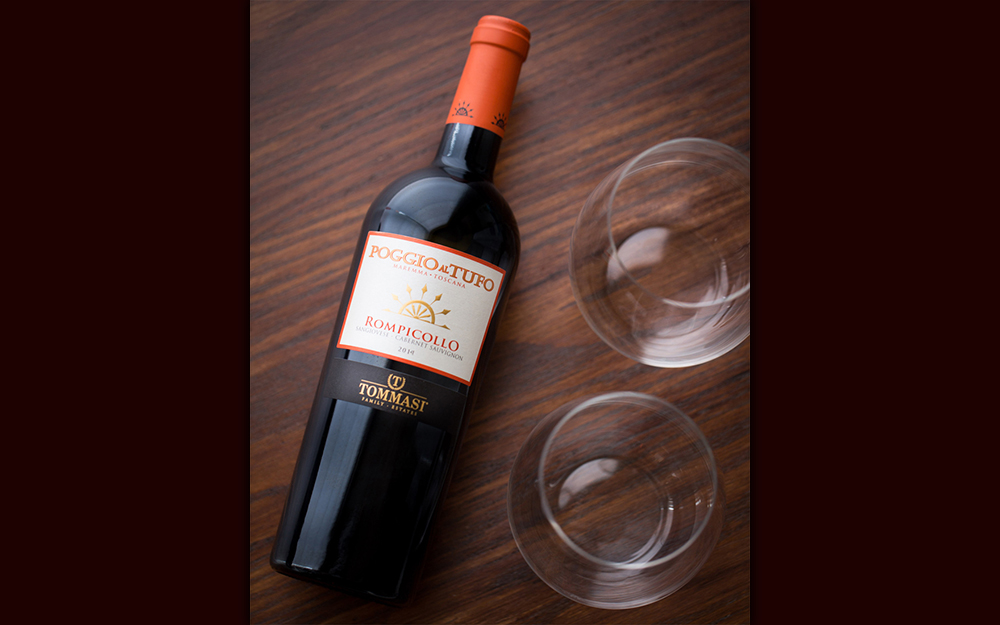
BY RICK RIOZZA
Last week we enjoyed the cute little tale of the Starving Black Rooster who stepped-up his game to crow, squawk, and otherwise alert the designated Florintine cavalier to commence a race to capture as much Chianti landscape possible under the Tuscan sun.
Well—that story surely got our roman juices flowing thus explaining that quick jaunt over to our friendly neighborhood wine merchant for their recommendations for a few Italian Delights to welcome the autumn season to our humble surrounds.
One of the most noticeable changes I’ve observed while serving as this valley’s somm-about-town and wine steward at Pavilions/Hagen’s/Gelson’s, Dan’s Wine Shop, and currently at Total Wine & More, is the increased enthusiasm for Italian wines.
A few things at play here perhaps: 1) the fear of reading and understanding the Italian wine label is over. Wine names and regions that for so long were difficult to recognize—let alone pronounce, have become commonplace in the brave new world of wine; 2) just one good bottle of wine will cause the new wine lover to try a few more from that similar region; and 3) although the California palate relishes the fat, smooth, and generous fruit profile, it’s nice—for a change of pace—to enjoy a lighter-bodied vino that can carry an entire meal with lively red and dark fruits, savory secondary characteristics, and that all-desirable “Italian Terroir” where one can sensually taste the Italian Landscape.
And what’s not to love about Italian wine? That whole vino Italia thing is real!—palpable even! The wine evokes an imagery of romance, history and culinary spirit—and then, there’s that real sense of place.
Most of you readers know already my theological bent. And it just cracks me up that atheists and agnostics alike can’t grasp the idea that God designed Italy’s location—geographically and geologically—right dab in the Mediterranean, as the perfect place for winemaking, with its verdant hills and lush vineyards producing well over one thousand different grape varieties.
Although it’s easy to claim the wines from Tuscany as representative of all Italian wine, there’s no question that the entire vineyard nation continues to produce world class wine. Because of the vast amount of vineyards and notable regions in the country, one could get bogged down with a lot of info, Of course if this means one would desire to learn their way around Italy by tasting and enjoying the vino of the area—well, that’s indeed how we learn the wines of the country. Beviamo!
For the next couple of articles or so, we’ll take a quick wine excursion to some of the most famous and popular places on the map. As our story last week took place in the historical Chianti region, why not get a taste of it immediately;
What we did learn last time was that the Chianti region’s red grape of choice was Sangiovese and that continues today. And when we see that Gallo Nero—the black chicken on the neck of the bottle, we are assured to be enjoying Chianti from its Classico (Original) region. There are now “sub-regions” that surround the traditional boundaries and the good news is that you’ll get to taste through these by simply reading the label.
One of the most recognizable Chianti brands is Frescobaldi. The Marchesi de’ Frescobaldi is one of Italy’s oldest wineries, with a history dating to the 1300s who now have a total of nine estates in Tuscany. The Nipozzo estate lies in the Chianti Rufina sub-region. At only $18 or so, the 2013 Castello di Nipozzano Chianti Rùfina Riserva is one of the best buys in town that gets you into the heart and soul of Tuscany.
Right off—color of this wine is a brilliant clear scarlet red—it’s romance in a glass. I agree with the winemaker’s notes that the nose is complex and intense with scents of bitter cherry, plum, and raspberry followed by spiced and toasty notes of pepper, nuts, nutmeg, and coffee. The wine opens up with wild blue/black berries with spicy aromas; great acidity yet smooth on the palette with ripe cherries, plums and a decent leather finish; just that description alone, should make one a believer that Chianti can bring it all to the table. As you can tell, this wine will be classic pairing with so many pastas and sauces. Turn around again, and you find this vino going beautifully with a nice grilled steak!
Another famous wine family in Italy is Tommasi. One cannot browse the wine aisle without seeing so many wonderful bottles from this venerable vineyard company located in the Veneto region in north-east Italy. Its Amarone is one of the best in the world.
Most enjoyably, next time we’ll be discussing and reviewing some of Tommasi’s great Valpolicellas, as well as the latest phenomenally trending “ripasso” wines from the Veneto; however since we’ve been discussing Tuscan wines, we wine enthusiasts should be aware of Tommasi’s latest endeavor in the Tuscan region.
Actually the production effort takes place in what is modernly known as the “Super Tuscan” region on the west coast of Italy. What the world has seen is the creative Italian winemakers blending the sacro-sanct Sangiovese with the traditional grapes of Bordeaux, especially Cabernet Sauvignon and Merlot. For the California palate, it’s like the best of both worlds: The fresh and lively spicy Sangiovese mixed up with the round and complex fruits of Cab and Merlot.
Tommasi’s 2014 Poggio al Tufo Rompicollo, at only $15 a bottle, is probably the best Super Tuscan for the price. With lively aromas of mature red berries, the palate goes on to capture the perfect blend of Cabernet Sauvignon and Sangiovese with tinges of raisins and sweet spices. Lush and smooth—an Italian gem!
Arriverderci!— Saluté!










































